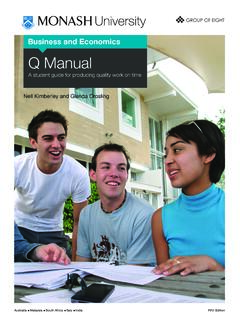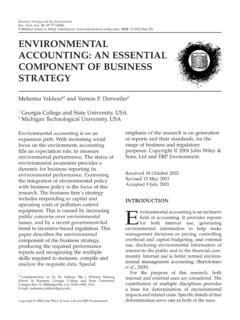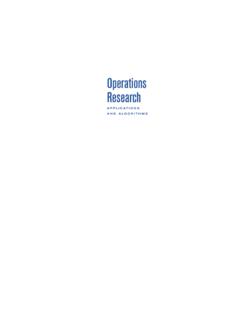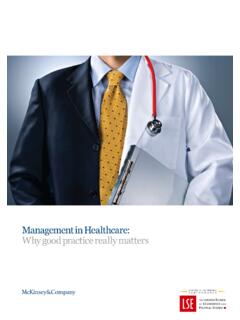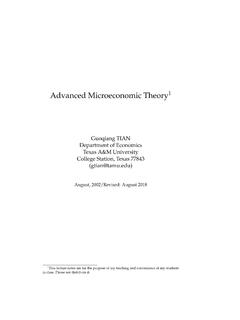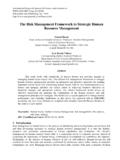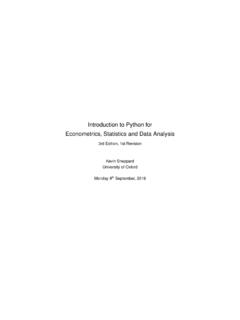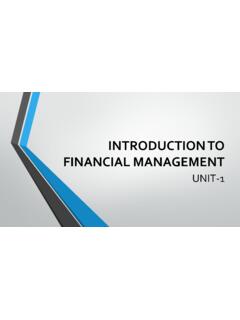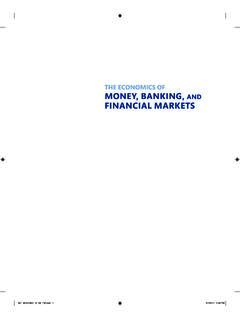Transcription of ADB Economics Working Paper Series
1 ADB Economics Working Paper SeriesEducation Outcomes in the PhilippinesDalisay S. Maligalig, Rhona B. Caoli-Rodriguez, Arturo Martinez, Jr., and Sining Cuevas No. 199 | May 2010 ADB Economics Working Paper Series No. 199 Education Outcomes in the Philippines Dalisay S. Maligalig, Rhona B. Caoli-Rodriguez, Arturo Martinez, Jr., and Sining Cuevas May 2010 (Revised: 17 January 2011)Dalisay Maligalig is Principal Statistician; and Rhona Caoli-Rodriguez, Arturo Martinez, and Sining Cuevas are Consultants at the Development Indicators and Policy research Division, Economics and research Department, Asian Development Bank. This study was carried out under Regional Technical Assistance (RETA) 6364: Measurement and Policy Analysis for Poverty Reduction.
2 The authors benefited greatly from the insightful comments of Anil Deolalikar, Socorro Abejo, Jesus Lorenzo Mateo, and Joel Mangahas. They also thank the Philippine National Statistics Office and the Department of Education s research and Statistics Division for providing the datasets used in this study. Any remaining errors are the authors .Asian Development Bank6 ADB Avenue, Mandaluyong City1550 Metro Manila, 2010 by Asian Development BankMay 2010 ISSN 1655-5252 Publication Stock No. WPS102229 The views expressed in this paperare those of the author(s) and do notnecessarily reflect the views or policiesof the Asian Development ADB Economics Working Paper Series is a forum for stimulating discussion and eliciting feedback on ongoing and recently completed research and policy studies undertaken by the Asian Development Bank (ADB) staff, consultants, or resource persons.
3 The Series deals with key economic and development problems, particularly those facing the Asia and Pacific region; as well as conceptual, analytical, or methodological issues relating to project/program economic analysis, and statistical data and measurement. The Series aims to enhance the knowledge on Asia s development and policy challenges; strengthen analytical rigor and quality of ADB s country partnership strategies, and its subregional and country operations; and improve the quality and availability of statistical data and development indicators for monitoring development effectiveness. The ADB Economics Working Paper Series is a quick-disseminating, informal publication whose titles could subsequently be revised for publication as articles in professional journals or chapters in books.
4 The Series is maintained by the Economics and research vI. Introduction 1II. Conceptual Framework 3 A. Data Sources 5 B. Statistical Models 13 III. Results 18 A. Individual Education Outcomes 18 B. School Outcomes 21 C. Quality of Education Outcomes 23IV. Policy Implications 26 A. Deployment of Teachers and Effective Class Size 26 B. Decentralization 30 C. On Making Access to Primary Education Equitable 32 D. On Working Children 36 E. Other DepEd Programs to Keep Children in School 38 F. On Gender Disparity 39 G. Age of Official Entry to Primary School 40V. Conclusions and Recommendations 41 Appendix 1: Education for All Targets and Accomplishments, Primary Education 47 Appendix 2: Indicators from Basic Education Information System 48 Appendix 3: Preliminary Analysis APIS 50 Appendix 4: Reasons for Not Attending School 52 References 58 AbstractThis Paper identifies key determinants of individual, school, and quality of education outcomes and examines related policies, strategies, and project interventions to recommend reforms or possible reorientation.
5 Two sets of data were used: (i) data on school resources and outputs from the administrative reporting systems of the Department of Education; and (ii) the 2002, 2004, and 2007 Annual Poverty Indicator Surveys. Analysis of individual, school, and quality of education outcomes showed that although school resources such as pupil teacher ratio is a key determinant for both individual and school outcomes, and that per capita miscellaneous operating and other expenses are significant factors in determining quality of education outcome, socioeconomic characteristics are stronger determinants. Children of families in the lower-income deciles and with less educated household heads are vulnerable and less likely to attend school. Girls have better odds of attending school than boys.
6 Working children, especially males, are less likely to attend secondary school. On the basis of these results, recommendations in the areas of policy and programs are discussed to help address further deterioration, reverse the declining trend, and/or sustain gains so far in improving basic education system performance outcomes. I. IntroductionFilipino parents value education as one of the most important legacies they can impart to their children. They believe that having a better education opens opportunities that would ensure a good future and eventually lift them out of poverty. Thus, they are willing to make enormous sacrifices to send their children to school (Dolan 1991, De Dios 1995, LaRocque 2004). However, with a poor family s severely limited resources, education tends to be less prioritized over more basic needs such as food and shelter.
7 Hence, the chances of the family to move out of poverty are unlikely. It is therefore, important that the poor be given equitable access to education. The 1987 Philippine Constitution declares that education, particularly basic education, is a right of every Filipino. On this basis, government education policies and programs have been primarily geared toward providing access to education for all. The Philippines is committed to the World Declaration on Education for All (EFA) and the second goal of the Millennium Development Goals (MDG) to achieve universal primary education by 2015. EFA s framework of action has six specific goals in the areas of: (i) early childhood care and education (ECCE); (ii) universal primary/basic education; (iii) life skills and lifelong learning; (iv) adult literacy; (v) gender equality; and (vi) quality.
8 In line with this framework of action, the Philippine EFA 2015 National Action Plan (UNESCO 2010) adopted in 2006 was formulated as the country s master plan for basic education. In 2000, the Philippines reported that it has achieved substantial improvement in terms of access to basic education, but still faces challenges in the areas of early childhood care and development, internal efficiency, and learning outcomes (NCEFA 1999). Through the government s efforts to achieve the 2015 MDG targets, recent studies such as the Philippines Midterm Progress Report on the MDGs (NEDA and United Nations Country Team 2007, Table 1) assess that the probability of achieving universal primary education (MDG 2) in the country is low (based on net enrollment rate, cohort survival rate, and completion rate).
9 Similarly, the 2009 EFA Global Monitoring Report (UNESCO 2008) identified the Philippines to be among the countries with decreased net enrollment rate from 1999 to 2006, and with the greatest number of out-of-school children (more than 500,000). The Philippines s current performance in education based on the trends identified by the EFA and MDG indicators as shown in Appendix Table 1 is not also promising. It is quite likely that the EFA and MDG targets will not be met by 2015. Overall, the Philippines has suffered a setback in most education outcome indicators. Although signs of recovery have been registered by some indicators, national targets for key EFA indicators such as intake and enrollment rates will still likely be missed in can the decline in the performance of EFA indicators of education outcomes be averted and improvements in those that registered recovery be sustained?
10 This Paper aims to address this question by identifying key determinants of selected major education outcomes, and on this basis, examine concomitant or related policies, strategies, and project interventions for purposes of recommending reforms or possible reorientation. Previous studies have suggested that poverty incidence (socioeconomic status), government expenditure on education (as a percentage of gross domestic product [GDP]) and pupil teacher ratio (PTR) are key determinants of school attendance or net enrollment rate. Except for a few studies covering a specific area in the country, most related studies in the Philippines examine the relationships of education outcomes and inputs using exploratory correlations and regressions of inputs and factors that may affect education outcomes.










